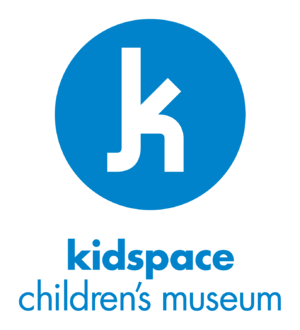Kidspace Children's Museum facts for kids
 |
|
| Established | 1979 |
|---|---|
| Location | 480 N. Arroyo Blvd. Pasadena, California 91103 |
| Type | Nonprofit |
| Visitors | 378,000 |
Kidspace Children's Museum is a super fun place for kids in Pasadena, California. It's right next to the famous Rose Bowl stadium. This museum used to be the Fannie E. Morrison Horticultural Center, a place for plants!
The Story of Kidspace
Since December 2004, Kidspace Children's Museum has been in its current home at Brookside Park in Pasadena. It's a special place where kids can learn in creative and hands-on ways.
How Kidspace Grew: A Timeline
1979: Kidspace Children's Museum started at the California Institute of Technology. It was a project by the Junior League of Pasadena. The goal was to help kids in the San Gabriel Valley learn more about arts, humanities, and science. Volunteers made an exhibit called "Making Senses." It had robots and cool neon lights. Over 10,000 people visited this first exhibit!
1980: The museum opened its doors in the Rosemont Pavilion. It had many "hands-on" exhibits. Groups like NASA's Jet Propulsion Laboratory and the Art Center College of Design helped create these exhibits. Many experts, including a school superintendent, helped guide the new museum.
1981: Kidspace moved to a bigger, easier-to-reach spot in Pasadena. Later that year, it became a private, nonprofit museum. This meant it was run for the public good, not for profit.
1982-1990: Kidspace offered many exhibits and programs. These helped kids learn about arts, humanities, and science by doing things. They had themes like "Homes and Habitats" and "Children of the World at Play."
1991-1995: A new person joined the team to help teachers plan school trips to the museum. Kids could also join summer workshops. "Toddlers on the Move" offered classes for parents and fun play for little ones. Volunteers helped create special yearly events. These included a child-sized Rose Parade and a "creatively creepy" Haunted House.
1996: The museum's leaders decided to make Kidspace even bigger. They wanted it to become a major learning spot for all of Southern California.
2002: Kidspace closed its old location at McKinley School. They started fixing up the historic Fannie Morrison Horticultural Center buildings. This was at Brookside Park.
2005: The new Kidspace opened! It featured beautiful gardens that were about 2.2 acres (almost 9,000 square meters) in size.
2010: Kidspace began to add more to its outdoor space. They planned a physics-themed area on the east side of the museum. This area, called the Robert & Mary Galvin Physics Forest, would have 13 exhibits.
2012: The Robert & Mary Galvin Physics Forest officially opened in July. It was the first big new addition to Kidspace since it moved to Brookside Park in 2004.
2013: The Imagination Workshop opened in November. It was built inside the Roberts Pavilion. This project was part of a bigger plan to add many new exhibits over several years.
2014: The S. Mark Taper Early Childhood Learning Center opened in May. This was another project from the museum's big plan for new exhibits.
2015 - 2016: The Pepper Tree Music Jam opened in November 2015. It was the first part of a new area called Arroyo Adventure. Arroyo Adventure opened in April 2016. It was the biggest new part of Kidspace since the Physics Forest. This area has 8 new experiences. Kids can connect with nature and explore water, rocks, mud, sticks, and plants. In November 2016, Kidspace also updated the Roberts Pavilion. It became the Storyteller Studio. This new area has four exhibits where kids can use puppets, act out stories, and create art.
2017 - 2019: In May 2017, Kidspace hosted a big conference for museum experts. The museum also expanded its "Kidspace On The Road" program. They partnered with AEG's Goldenvoice for the Arroyo Seco Weekend music festival. The museum reached its goal of raising $13 million for new projects. The Splash Dance Fountains reopened in 2018. A new cafe, Bean Sprouts Café, also opened.
2020: Lisa Clements became the new chief executive officer of Kidspace.
Museum Supporters
Kidspace has received help from many people and groups. These include individuals like Jud and Marilyn Roberts, and the Boone Family. Important community partners include the City of Pasadena, the Junior League of Pasadena, and Nestle Corporation.

